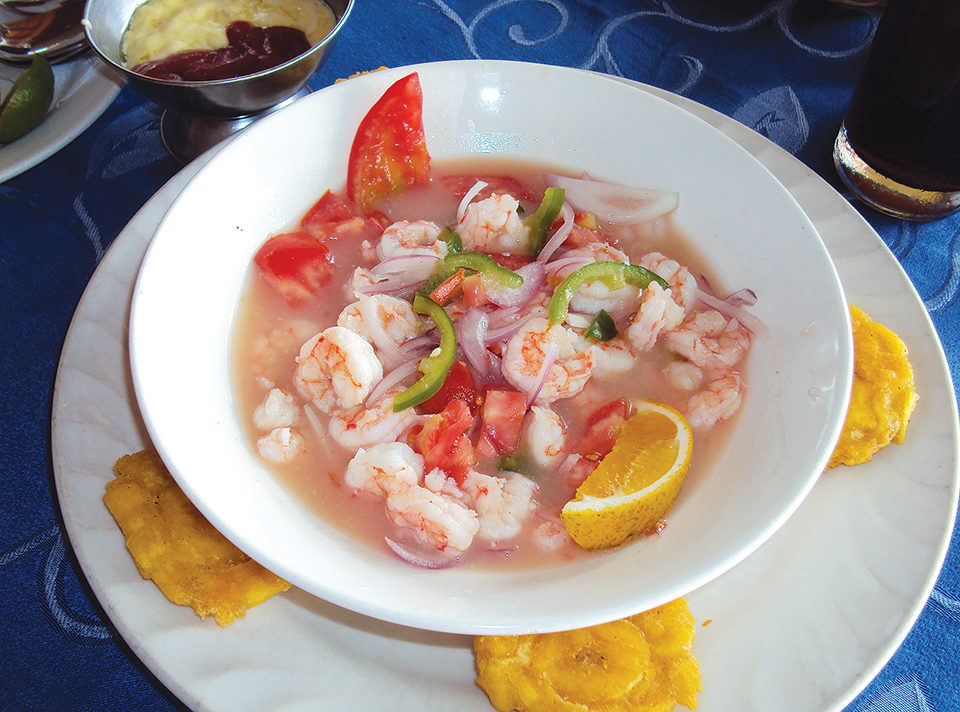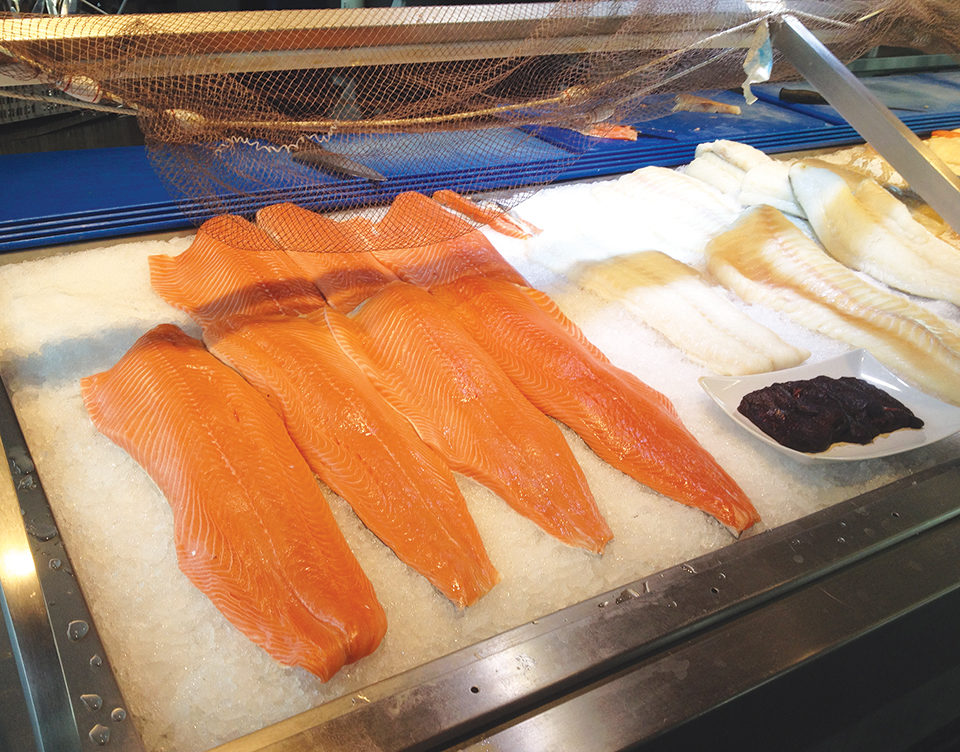Fish accounts for just 17 percent of the global population’s intake of animal protein

As we continue breaking through on the importance of seafood in human health – and believe me, we are – seafood production people have to bring on new product innovations, and our marketing people have to keep hitting the right messages. Recently, I was in Bergen, Norway, to attend both the United Nations Food and Agriculture Organization (FAO) Committee on Fisheries (COFI) Fish Trade meeting and the North Atlantic Seafood Forum (NASF), and I was impressed by how many times the subject of seafood and health came up in a positive way.
The United Nations clearly has seafood’s role in human health as an agenda item now. While human nutrition is a relatively new item for the COFI sub-committee on fish trade, there was much agreement about the need to increase fish consumption.
It is now fully understood in these circles that seafood plays an essential role in human nutrition and is an excellent source of protein as well as essential fatty acids and micronutrients deficient in many diets.
Perspectives: FAO
According to FAO, fish accounts for about 17 percent of the global population’s intake of animal protein, but this share can exceed 50 percent in some countries. In West African coastal countries, where fish has been a central element in local diets for many centuries, the proportion of dietary protein from fish is very high: 43 percent in Senegal, 72 percent in Sierra Leone and 55 percent in Ghana and Gambia. The same picture is seen for some Asian countries and small island states.
The paper presented by FAO at the COFI Fish Trade meeting also reinforced that seafoods provide the long-chain omega-3 fatty acids that support brain function and are important for optimal brain and neurodevelopment in children. Alternative fatty acids found in vegetable oils must be converted into docosahexaenoic acid in an inefficient process that makes it difficult to rely only on vegetable oil during the first critical 1,000 days of our lives.
What is most important is that a paper is being prepared by FAO on the role of fish in nutrition for the November 2014 Second International Conference on Nutrition. This high-level ministerial conference will propose a flexible policy framework to address today’s major nutrition challenges and identify priorities for enhanced international cooperation on nutrition. The FAO paper will highlight existing knowledge on the roles aquaculture and fisheries can play in combating malnutrition, both as a provider of essential nutrients and as an income-generating activity.
Perspectives: NASF
At NASF, we learned from a number of organizations about their involvement in seafood and health issues. WhiteFishMall, which is establishing a branding concept for North Atlantic whitefish through a web-linked information site, promotes the nutrition information of all their species directly to consumers.
The European Union End User Session – which included representatives of Young’s, Sainsbury’s, Metro, ICA, Delhaize and M & J Seafoods – also highlighted issues relating to health. Sainsbury’s Judith Batchelar said consumer interest in the health angle rose from 11 percent in 1995 to 22 percent in 2013, and 54.9 percent of buyers said they pay greater attention to nutritional labeling. Additionally, 68 percent of those surveyed agreed they should eat more healthy products like seafood. Interestingly, speed of preparation has become more important for consumers. In 1980, 60 minutes was considered acceptable, but in 2013, that time has become just 31 minutes.
Mike Berthet of M & J Seafood stressed the importance the company places on qualified training, both within their enterprise and also through engaging their customers. To that end, M & J is offering training courses to hotel chains and has created a “Chef’s Tool Kit” full of relevant information that empowers chefs to be more creative with their seafood offerings.

U.S. market move to quickservice
In another session, John Connelly of the National Fisheries Institute pointed to a worrying sign in the United States, where since 2006, 15 annual full-service restaurant visits/person have been wiped out due to recessionary issues. He highlighted that the full-service arena had been an important growth area for seafood, where eight of every 10 entrees were seafood, thus leaving a big hole in opportunity.
Describing the U.S. market move to quick-service restaurants and e-commerce home food deliveries, Connelly stressed: “The days when pieces of protein were the center of the dinner plate continue to fade. Meat, poultry and seafood are still being used as ingredients or additives to other dishes, most notably as part of a sandwich.” He closed with the comment that “Seafood convenience, even in takeaway, remains an innovative challenge.”
White fish forum
During the White Fish Forum, a number of the presenters made the point that while health benefits are a strong selling point for seafood, unless the product also meets criteria such as taste, convenience, availability and price, then it is not top of mind. When people are not regular consumers of a product, it takes a mammoth change to make inroads.
Sysco, a global leader in marketing and distributing food products to restaurants and healthcare, educational and lodging establishments, also made this point in the recent communication “Healthful Food Must Pass the Taste Test.” In it, Sysco said: “This year’s National Nutrition Month acknowledges a fact that most chefs and restaurateurs already have learned – that taste is the most critical element in an individual’s decision of what to eat.”
While social, emotional and health factors all play a role in the decision-making process, we are most likely to choose the foods we think taste the best. “When taste is the most influential factor driving what consumers eat, it is important that we find the balance between choosing the foods we like and those that provide the nutrients we need,” said Dr. Glenna McCollum, president of the Academy of Nutrition and Dietetics.

Balanced nutrition, taste
Balancing nutrition and taste is key. The National Restaurant Association’s 2014 Culinary Forecast, which polled almost 1,300 chefs across the United States, found that health and nutrition, smaller portions and a growing interest in incorporating more whole grains, fruits and vegetables into dishes were among the year’s “Top 20 Trends.”
Libby Mills, a registered dietitian and spokesperson for the Academy of Nutrition and Dietetics, said: “We know that 82 percent of adults eat out at least once a week and that about a quarter of Americans’ calories come from eating out. People desire flexibility in restaurants to meet their different needs and wants.”
As a result, she said: “Restaurateurs can step up and be proactive, and change perceptions that consumers have. The new frontier is how to make healthy food delicious. Restaurants can play a significant role in building healthful eating habits … and if you offer it, they will come. This is a great time to be a leader.”
During the warmer weather, chefs can help accentuate seasonality through the use of cooking techniques that reduce fat, like cooking with broths. “During spring, we look for lighter fare and lighter tastes, and poaching addresses that,” Mills said. “In particular, you can sear a piece of salmon quickly on one side and then poach it quickly with vegetables.”
Mediterranean diet
Finally, growing research on its numerous health benefits has given the Mediterranean Eating Style precedence in the scientific community. Consumers are driven toward this flavorful, tasty and freshly prepared cuisine. It is growing in popularity, and we all have the opportunity to capitalize on the trend. The emphasis is on healthful ingredients rich in antioxidants and fiber, such as fresh fruits, vegetables, legumes and whole grains, and healthier fats derived from olive oil, nuts and fish/seafood.
(Editor’s Note: This article was originally published in the May/June 2014 print edition of the Global Aquaculture Advocate.)
Author
-

Roy D. Palmer, FAICD
GILLS
2312/80 Clarendon Street
Southbank Victoria 3006 Australia
www.gillseafood.com
Tagged With
Related Posts

Health & Welfare
Aiding gut health with a natural growth promotor
A study with Nile tilapia conducted in commercial production cages in Brazil showed the potential – in the absence of major disease threats – of a commercial, natural growth promotor that modulates the microbiota (inhibiting growth of pathogenic bacteria and promoting growth of beneficial bacteria) and inhibits quorum sensing.

Intelligence
Behold the nutritious oyster
Oysters provide important, natural filtration of water and are an important component of many healthy coastal ecosystems because their active filtering can help improve and maintain water quality. For many coastal communities, oysters are an important food resource and excellent sources of protein and amino acids, zinc, selenium, iron and B-vitamins.

Innovation & Investment
Aquaculture America 2017: Communication key to the future
This year’s Aquaculture America in San Antonio, Texas, provided significant learning and networking opportunities. It successfully brought together 14 U.S. aquaculture organizations and more than 1,600 participants from Europe, Asia, Africa and Australia.

Intelligence
Facts about shrimp and cholesterol
Many people, including health-conscious consumers, are concerned about the cholesterol content of foods such as meat, eggs and dairy products. In the case of shrimp, the cholesterol story is different because a number of research studies have demonstrated that the high percentage of “good fats” in shrimp reduce the impact of cholesterol, and that a majority of people can eat shrimp as part of a balanced diet.

